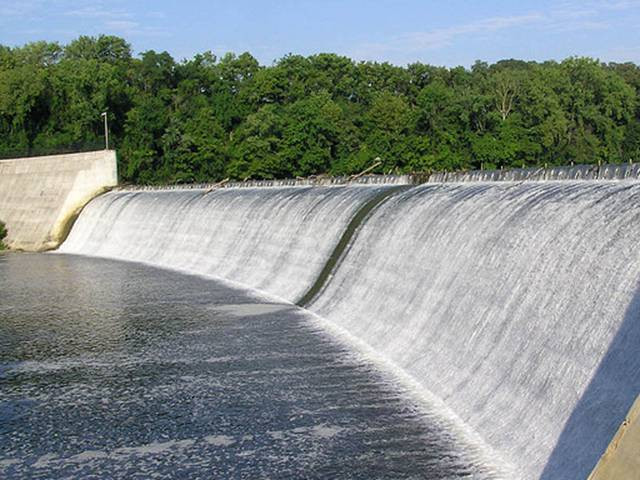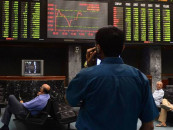Time for Pakistan to re-look budgetary priorities for 2016-17
Without adequate spending on social sectors and water resources, country to remain mired in poverty

Without adequate spending on social sectors and water resources, country to remain mired in poverty. PHOTO: AFP
The announcement of Pakistan’s annual budget is only a couple of months away. Allocation of available limited resources among various competing demands is a crucial factor in determining how the country’s economic, social and security objectives are achieved. The budget is thus the government’s most important policy paper.
An examination of the budget can reveal how serious the government is in pursuing the priorities it has set for itself. It is instructive to see how well the budget allocations to various sectors match the priorities professed by the PML-N government.
If one examines the last three budgets of this government, one finds a significant disconnect between its announced priorities and the actual budgetary allocations.
Govt turns down IMF proposal to limit supplementary budgets
In the 2015-16 budget, the water sector was identified as the “most important sub-sector” in the development plan. No one can dispute that water is the lifeline of Pakistan’s economy and deserves proper allocation of resources.
However, a third of the population lacks access to safe drinking water. The mega dams are over 50 years old and their storage capacity is falling. They store only 30 days of average water demand, compared to 1,000 days for Egypt and 220 days for India.
Furthermore, despite serious energy shortages, we are not even exploiting one-seventh of the hydropower potential of an estimated 50,000 megawatts (at 2 cents per kilowatt hour).
In view of these serious challenges, one would have expected the water sector to have a high priority in terms of budget allocations. But the total allocation for all water projects in various parts of the country was a mere Rs31 billion. This was against Rs185 billion earmarked for roads.
Indeed, the allocation for the water sector is just a fraction of what is being spent on the Orange Line, which will benefit a small segment of the population of Lahore.
Had the government set aside funds in line with its declared priorities, the allocations for the two sectors would have been reverse of what they actually were. One can only imagine how much better off that would have made Pakistan in terms of energy and food security and the well-being of its population in the next three to five years.
Human, social capital
Another priority area identified by the finance minister was “developing the human and social capital by enabling universal access to education and health facilities, empowering women and eradicating poverty, thereby capitalising on the demographic dividend and increasing the total factor productivity”.
In order to achieve this objective, the government committed to increasing the expenditure on education to 4% of GDP by 2018 (as per Unesco target and bringing it on a par with regional countries) as against the dismally low 1.75%.

The provincial governments were required to increase their share of spending from 1.33% of GDP to 3.2% and the federal government was to increase its share by about 250% or from 0.34% of GDP to 0.80% over the next three years.
‘Unconstitutional’ move : Senate’s call to oversee budget irks government
Actually, however, there was only a nominal increase of 14% for education compared to 65% for roads. If the press reports are anything to go by, the combined expenditure on education has not even exceeded 1% of GDP during the current year.
Tariffs and taxes
The finance minister also announced a series of measures for boosting exports. These included rationalisation of tariffs and taxes so as to remove the anti-export bias and make them more competitive. He specifically announced a reduction in the maximum rate of customs duty from 25% to 20%.
However, immediately after this announcement, regulatory duty of 10% to 15% was imposed on a large number of products, thus effectively raising the maximum tariff to even beyond what prevailed before the PML-N government assumed office.
In fact, throughout the year, duty rates were continuously being raised making the budget highly unstable. As a result, for the first time, exports have been continuously falling year on year and have dropped about 15% since announcement of the last budget.
Before the government announces budgetary measures for 2016-17, it should take a careful stock of its priorities. If it really believes that water sector is the most important, then it should allocate a greater share to it, or at least make a start in that direction.
Similarly, if it believes that spending on education should be 4% of GDP by 2018, it needs to raise the expenditure by at least 80% each year till that target is achieved.
If it believes that lower taxes on international trade will make the industry more competitive, then it should stick to that principle and not keep raising tariffs on imports. Without adequate spending on social sectors, developing water resources and expanding exports, the country will remain mired in poverty.
The writer served as Pakistan’s ambassador to WTO from 2002-08
Published in The Express Tribune, April 4th, 2016.
Like Business on Facebook, follow @TribuneBiz on Twitter to stay informed and join in the conversation.



















COMMENTS
Comments are moderated and generally will be posted if they are on-topic and not abusive.
For more information, please see our Comments FAQ